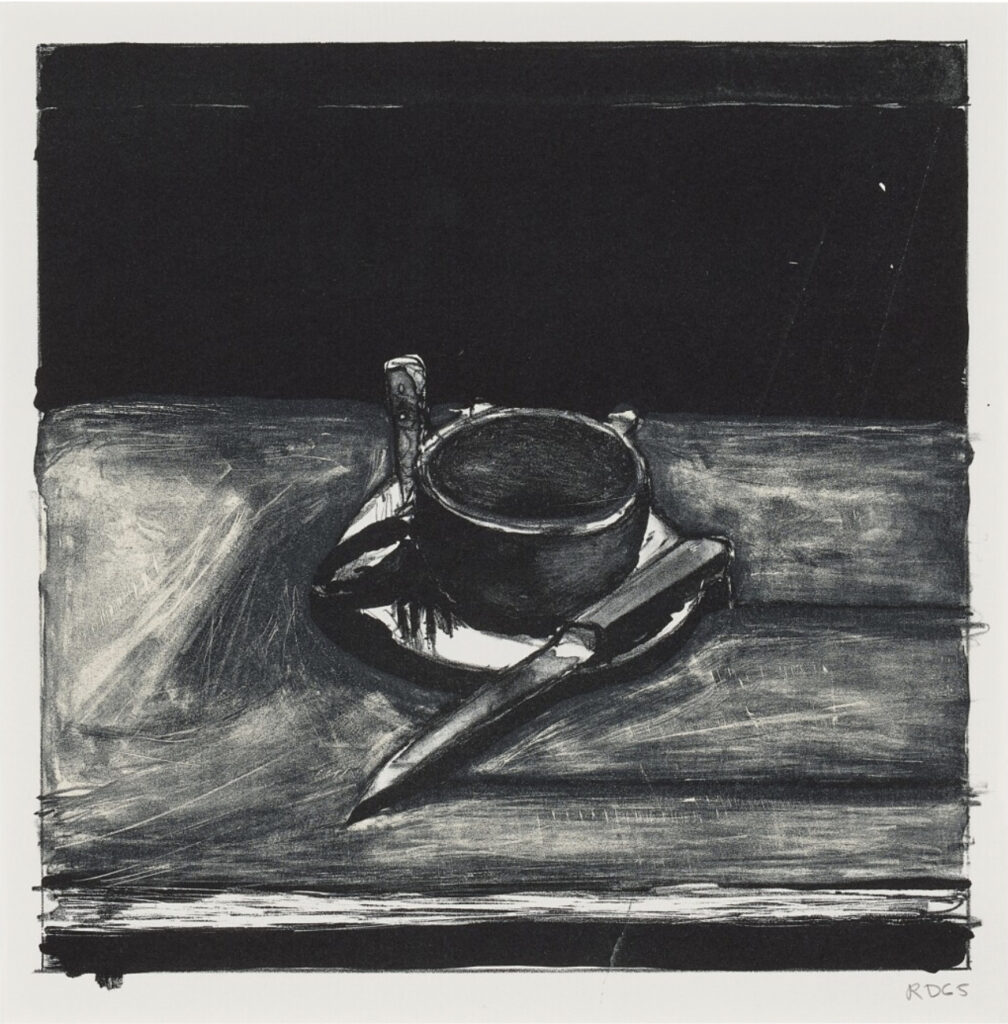
Richard Diebenkorn (1922–1993) oscillated between abstraction and figuration in his paintings and prints. He created Cup and Saucer during his so-called “Berkeley Years,” the period from 1953 to 1966 when he lived in Berkeley, California, and during which, from 1956 to 1966, he worked exclusively from life.
Diebenkorn first explored the medium of printmaking while attending the California School of Fine Arts in the 1940s, long before his return to figuration. In the early 1960s, he began working with professional print workshops, such as Original Press in San Francisco, which produced this print.
This lithograph is an important example of Diebenkorn’s explorations of the printmaking medium. Printed on wove paper, the lithograph is composed of two discretely combined layers, one containing dark lines and wash, and another semi-transparent layer in white, which helps illuminate the highlights and shadows. According to Kathan Brown, the founder of Crown Point Press, Diebenkorn often used printmaking as “a way of drawing” to test ideas he was exploring in his paintings. Cup and Saucer contains Diebenkorn’s signature combination of expressive lines of varying widths and weights, as if he had sketched on paper.
Cup and Saucer is also significant for its subject-matter. Just one year after creating the print, in 1966, Diebenkorn would leave Berkeley for Santa Monica, where he would begin his famed Ocean Park series. One could read his interest in line-making as a prescient indication of this return to abstraction. However, Cup and Saucer also reveals that Diebenkorn was inspired by artists such as Matisse and Cézanne, rather than his abstract expressionist contemporaries. In fact, in 1964, Diebenkorn had traveled to the Soviet Union as part of the Department of State’s Cultural Exchange Program to visit restricted art collections throughout the country, where he studied works by these two artists, as well as Renoir, Gauguin, and Malevich. The influence of this trip can be plainly seen in the materiality and gesture of Cup and Saucer. The lithograph thus serves as a unique time capsule of Diebenkorn’s career up until 1965, and his mastery of figuration on the cusp of his return to abstraction.
Courtesy of Susan Sheehan Gallery, New York.